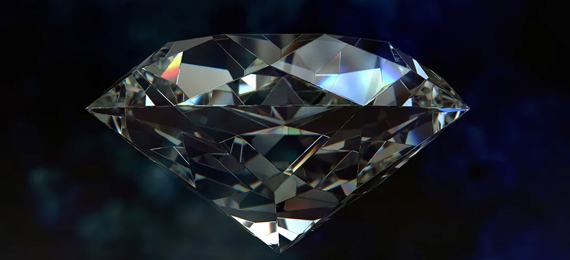
Diamond, the most loved gemstone, is the hardest natural substance on our planet. The term is derived from the Greek word ἀδάμας (adámas) meaning “invincible” or “unbreakable.’ From that word we derived the term “adamant.” Due to its hardness, it has incredible cutting abilities. Diamonds have been considered precious for thousands of years. Read on to learn more about the hardest substance on earth.
Diamond-Hardest Substance on Earth
Diamond is the hardest substance known to man. It is mainly known for its high hardness. It is formed of 100% carbon atoms and a diamond can only be scratched by another diamond. Modern scientists have been searching for new harder, cheaper, and more practical alternatives to replace the diamond. Diamond is a unique form (or) ‘allotrope’, of carbon. Many allotropes in the carbon family include amorphous carbon, carbon nanotubes, diamond, and graphite. They are formed of carbon atoms. However, the types of atomic bonds between them may vary. The outer surface of every carbon atom contains four electrons. In diamonds, these electrons are classified into four other carbon atoms to create very hard chemical bonds. As a result, it forms an extremely tough tetrahedral crystal. The tightly bonded arrangement makes the diamond one of the hardest substances on Earth.
Hardness is an essential feature of a material and determines how it can be used. It is also challenging to determine. For minerals, scratch hardness is considered the measurement to determine how resistant it can be to being scratched by other substances. There are many ways to measure hardness. A tool is mainly utilized to construct a dent in the material’s surface. The diamond is very hard and surprisingly unstable. While heating the diamond above 800℃ in the air its chemical properties may change and also can affect its solidity and allow it to react with iron, making it inappropriate for machining steel.
What's the Only Thing That Can Scratch a Diamond?
- A. Glass
- B. Ceramics
- C. Wood
- D. Diamond
Also Read: What Is the Softest Material in the World
Boron nitride
It is a synthetic material boron nitride that was first created in 1957. It is similar to carbon in that it contains many allotropes. Its cubic form(c-BN) has a similar crystalline structure as diamond. This is commonly used as a hard machine instrument coating in the aerospace industry and the automotive industry.
Synthetic diamond
It has been in use since the 1950s and, due to its unique crystal structure, is often referred to as harder than natural diamond. This can be made by applying extreme pressure and heat to graphite to force its structure to rearrange into a tetrahedral diamond which is regarded as inefficient and costly.
Q-carbon
Recently, scientists from North Carolina State University invented what they called a new type of carbon, different from other allotropes. It would seem to be harder than diamond Q-carbon
was created by heating non-crystalline carbon with an extremely powered fast laser pulse up to 3,700 °C. Then it is swiftly cooling or quenching. Hence it is called “Q-carbon.”
Final Word :
In the pursuit of understanding materials and their homes, exploring the toughest substances on Earth unveils the fantastic resilience and strength located in nature and human ingenuity. These substances not simplest inspire innovation in various industries but also deepen our appreciation for the wonderful diversity and talents of substances inside the world around us.